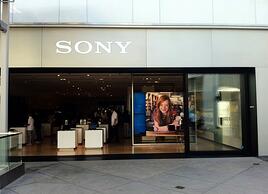
You can have too much of a good thing, especially if it wasn’t yours to start with. Here’s the perfect example - brands that shamelessly imitate the strategies of their major competitors. I was scouting the Westfield complex in Century City, LA last week and noticed a new Sony concept store a few feet from a classic Apple retail shrine. It was striking how similar both stores appeared, except for one crucial distinction - Sony was devoid of customers.
Years ago I remember watching a fascinating interview with Steve Jobs. He was comparing himself to Microsoft and Bill Gates, explaining that their mission at Apple was to take as much as they could from art, music, history, science and technology - in his words ‘the best things that humans have done’ - and cram it into their products. That’s why, he said while people use Microsoft products, they love the ones that Apple makes. The difference was passion.
Apple’s retail strategy is also no stranger to appropriation. Next time you are in front of one of their stores, stop for a minute and squint your eyes so that the laptops and screens disappear and all you can see are abstract shapes, materials and lighting. Anything look
familiar? When they designed their stores, Apple took direct inspiration from the world of luxury boutiques with their expensive construction materials, theatrical street presence and sparse merchandising, They ruthlessly imitated, but importantly - it was not from the playbooks of their immediate competition.
That said - there are some limited scenarios when direct imitation works as a disruptive strategy. For example when you take an expensive product, and deliver a comparable substitute at a dramatically lower pricer point. Although their customers might deny it - low priced imitation is the secret behind the success of fashion brands like Zara and H&M. They directly copy high fashion styles from established luxury brands, and rapidly manufacture and curate market appropriate products at prices mass market consumers can afford. Not so dissimilar is the practice of Chinese ‘shanzhai’ or bandit phone manufacturers, who offer clones of high end smartphones at substantial discounts to their originals, and in doing so, open up entirely new consumer niches.
The distinction between inspiration and imitation might be nuanced, but the competitive differentiation can be vast. Steve Jobs was always fond of the infamous Picasso quip - 'good artists copy but great artists steal'. But what does stealing really mean? When you steal something, you don’t just take it - you make it your own. Sage advice for the next time someone asks you to look over your shoulder and mindlessly mimic something your competition does.

